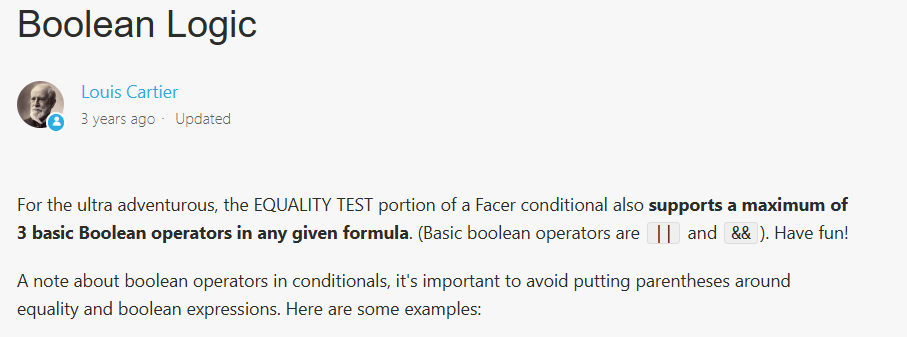Newby question. I’m looking for help with nesting conditionals (not serial). I’ve search through the community and can’t seem to find it.
In general, basic conditional syntax is as follows:
$#tag#==false?100:0$ therefore the standard IF ? THEN : ELSE
I would like to nest conditionals within conditionals. For example, below are increasing complexities. Please ignore the () as I’m using them to visually identify the parts of the conditional more easily.
Example 1: Additional conditional in the ELSE section.
$#tag#==false?100:($#tag#==false?#DD#*4:36$)$
Example 2: Additional conditionals in the THEN and ELSE sections.
$#tag#==false?($#tag#==false? 8+1:#DOW#*60$):($#tag#==false?#DD#*4:36$)$
Example 3: Conditional buried within the IF section as well.
$($#tag#==false?#tag#/2,0$)==false?($#tag#==false? 8+1:#DOW#*60$):($#tag#==false?#DD#*4:36$)$
As you can see I’m burying a conditional each part of the IF THEN ELSE sections. Looking for the syntax to do nested conditionals.
Another question as it relates to conditional.
Starting with the basic condition again:
$#tag#==false?100:0$
Can I do additional math with the result of the conditional?
$#tag#==false?100:0$*10
In this example, if the result of the conditional is 100, I would like to multiple 100 by 10.
Are these possible? And if so, what is the syntax?
Is there a limit to the number of buried conditionals within facer?
Thanks in advance.

